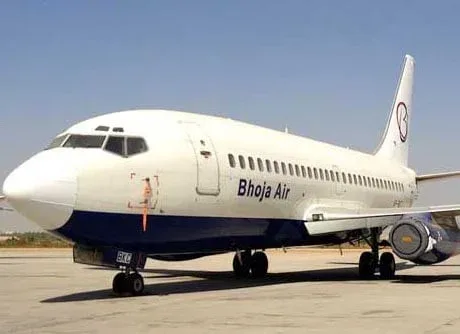Recent crash of Bhoja Airline Boeing 737 on the final approach of Islamabad runway has encouraged all and sundry to give their ‘expert opinion’ on a subject, which is highly technical.* Many experts would like to lynch the owners of the airline, others feel that older aircraft are a recipe for disaster, while many want to fault the air traffic control for ‘allowing’ the aircraft to land and yet another set of people think that the pilot made a gross error of judgment or lacked the skills to fly in inclement weather.
I think there is a need to adopt an analytical approach and show patience until the accident investigation team has examined all the evidence including Flight Data Recorder, Cockpit Voice Recorder, conversation between the control tower and the pilot and the aircraft wreckage.* Despite what many cynics might think, such investigations do come to conclusion and invariably recommend measure to avoid recurrence of similar accidents.
An aircraft can crash for a number of reasons, including technical, pilot error, weather phenomena, sabotage, more than one reason contributing to a chain of events etc.* While one must wait for the inquiry to be completed, as a pilot who has flown in and out of Chaklala airfield (Islamabad airport) for three decades, it is fair to speculate that the crash in question has all the tell-tale signs of being a weather related accident caused by low level wind shear.* Weather can affect flights in a number of ways: crosswinds, tailwinds, wind shear, mountain waves, lightning, hail storm, poor visibility, precipitation, St. Elmo’s fire, turbulence and low clouds.
Low Level Wind Shear has been responsible for a number of accidents all over the world and may well be the cause of this accident also.* According to ICAO statistics, 28 aviation accidents, with 700 fatalities were attributed to this phenomenon between 1970 and 1985. Two fatal aircraft accidents in the United States led to extensive study of wind shear. The description of a Delta Airline Tri-star crash while landing at Dallas-Fort Worth airport will help explain why I am of the opinion that the crash occurred due to wind shear (or more accurately, microburst):
“At Dallas-Fort Worth International Airport, weather was poor and an isolated thunderstorm had developed in the vicinity of the airport. The flight crew noticed the isolated storms ahead, but decided to proceed through them anyway, which resulted in the aircraft getting caught in a microburst.
At about 800 feet (240 m) above ground level, the aircraft’s airspeed increased significantly without crew intervention. Although the aircraft was supposed to land at 149*knots*IAS*, its airspeed suddenly increased to 173 knots IAS. First Officer Price tried to stabilize the aircraft’s speed, but Captain Connors had recognized the aircraft’s speed increase as a sign of*wind shear, and he warned Price to watch the speed. Connors told Price, “You’re going to lose it all of a sudden … there it is.” Suddenly, the aircraft’s airspeed dropped from 173 to 133 knots, and Price pushed the throttles forward, giving temporary lift, but the speed then dropped. In addition to the sudden tailwind, the aircraft also experienced a downdraft of more than 30 feet per second. This downdraft would reverse itself several times over the final moments of the flight.
As Price struggled to maintain control of the aircraft through rapidly changing wind conditions, it was hit by a sudden sideways gust, causing a rapid roll to the right and an increase in the aircraft’s angle of attack. Price attempted to regain control by pushing the aircraft’s nose down to avoid a stall, but the severe wind conditions continued to force the airplane towards the ground. Its descent rate reached 5,000 feet per minute at 280 feet above ground level.
The National Transport Safety Board (NTSB) attributed the accident to absence of instruments to detect microbursts aboard aircraft – the radar equipment aboard aircraft at the time was unable to detect wind changes, only thunderstorms.”
This logically leads to the question: what is microburst, how can it be recognized and avoided.* Thunderstorms are almost always accompanied by Cumulonimbus (CB) clouds. As a*CB*cloud becomes mature, strong downdrafts occur, usually associated with*precipitation*in the form ofRain,*Hail, or*Virga*(rain, which does not reach the ground). The downdrafts can be very powerful, with vertical winds of 6,000 ft per minute.
*A microburst is a downburst, created by an area of significantly rain-cooled air that, after reaching ground level, spreads out in all directions producing strong winds.* A Downburst affecting an area 4 km in diameter or less is commonly referred to as a*Microburst. Japanese weather expert, Tetsuya Theodore*Fujita, (also known as Mr. Tornado for his extensive research work on tornados) coined this term.*
Typically, when an aircraft is on final approach and flies below a CB cloud, it encounters strong headwinds (which shows increase in speed), followed swiftly by a strong downdraft and loss of altitude. The Captain elects to carry out a missed approach, raises the undercarriage and pushes forward the throttles. However, the near idle engines take time to pick up power, the aircraft continues to lose height.* The aircraft suddenly encounters strong tailwinds causing loss of lift and further loss of height. Consequently, the aircraft hits the ground sustaining structural damage and crashes.
Detecting a downburst is not easy. The effects are usually localized and, if the precipitation evaporates before reaching the ground (Virga), clouds may not necessarily be associated with heavyrain*or*hail. In the United States, many airports, which experience regular severe*thunderstorms, have systems in place to detect wind shear, often comprising anemometers in a network around the airport. This system is known as low level wind shear alerting system (LLWAS). A limitation of such systems is of course that it only detects wind shear at ground level. Hong Kong airport has a sophisticated system for detecting wind shear which combines a network of anemometers with Doppler*weather radar*and a*LIDAR*(Light Detection And Ranging) wind shear warning system which can detect the movement of much smaller particles than a conventional weather radar, like dust particles, and therefore can more effectively detect wind shear. At Hong Kong, like Islamabad, wind shear is caused by terrain effects as well as weather.
Let us look at how down-bursts develop:
The evolution of down-bursts is broken down into three stages: the contact stage, the outburst stage and the cushion stage.
A downburst initially develops as the downdraft begins its descent from cloud base. The downdraft accelerates and within minutes, reaches the ground (contact stage). It is during the contact stage that the highest winds are observed.
During the outburst stage, the wind “curls” as the cold air of the down-burst moves away from the point of impact with the ground.
During the cushion stage, winds about the curl continue to accelerate, while the winds at the surface slow down due to friction.
In the United States, all major airports were equipped with*Low Level Wind Shear Alert System (LWSAS) by 1990. Currently,* third generation LWSAS, and the newer Terminal Doppler Weather Radar, a rotating ‘pencil beam’ detecting windblown objects that indicate a sudden change in wind direction as well as abrupt changes in moisture have been installed at airports across North America and the world.* Pakistan does not have this aid at any airport though Islamabad and Peshawar are prone to thunderstorms in the vicinity of the airports.
Many modern aircraft, such as the*Boeing-777, have*predictive wind shear*(PWS) warning systems which collect wind velocity data gathered by the*weather radar*to identify the existence of*wind shear. These systems have a short range, and are dependent on the radar picking up velocity data from water and ice particles ahead of the aircraft and so don’t work in dry conditions, but they are effective, providing the pilot with an opportunity to abort take-off or carry out a missed approach.
After the 1975 Eastern Airlines crash in New York was attributed to a micro-burst pilots were trained in ways to recognize, avoid, and recover from wind-shear encounters. American FAA’s wind-shear training-aid program started in 1987, and it stresses recognition and avoidance of wind-shear hazards. Pilots are told to look for visual clues such as virga (elevated rain shafts), plumes of dust and debris at the surface, and intense rain shafts that could all be indicative of micro burst activity. Awareness is always heightened any time thunderstorms are present in the airport region.**As a result of these steps, since 1994, there has not been a commercial aircraft accident in USA attributed to wind shear.
Perhaps CAA Pakistan needs to install LWSAS at airports prone to thunderstorms and there is also a need for training and awareness program for the pilots to enable them to recognize and avoid micro-bursts These courses can be conducted at Pakistan Air Force Institute of Air Safety, the only institution in Pakistan conducting Flight Safety courses. These measures can go a long way in eliminating similar accidents in the future.
(The author is a retired Air Vice Marshal of PAF, who has commanded PAF’s Air Transport Operations and flown extensively from Chaklala and operated different air transport aircraft, operating from numerous international airports.)
AN AVIATOR’S ANALYSIS OF BHOJA AIRLINE CRASH
By AVM Nafees A Najmi (Retd.)




















